Welcome to Q4 2024. As Q3 wrapped, its ending was marked by volatility & uncertainty in the C market brought on by climate strife & new impending regulations, origin pricing challenges brought on by the volatile C market, & complex logistics landscapes brought on by a major strike among other preexisting factors. The moment is hectic although some of these issues show potential for positive resolution going forward. As always, we’ll keep you in the loop. We’ve also got spectacular coffees on the way from Peru, Bolivia, & Rwanda & a slim spot position that’s prime to scoop up. Read on for details on an extraordinarily volatile C market, logistics updates, & the details on the local landscape of each origin in which we work.
Logistics, Port, & Warehouse Updates
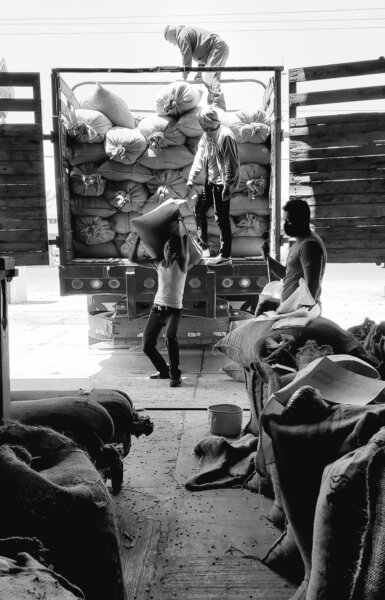 The International Longshoremen’s Association (ILA) agreed to suspend their strike on Thursday last week after reaching “a tentative agreement on wages” with their employers, the United States Maritime Alliance (USMX). Dockworkers agreed to extend their contract & continue negotiations through January 15, 2025, after the White House pressed both parties to reach a deal & bring the strike to a close. The Port of New York & New Jersey resumed operations on Friday October 4th, along with ports up & down the US East & Gulf Coasts. The ILA agreed to end their walk out after securing a higher wage offer from the Maritime Alliance – both parties agreed to a 62% increase in salaries over the life of the new 6-year contract. Issues of automation & retirement benefits remain to be negotiated.
The International Longshoremen’s Association (ILA) agreed to suspend their strike on Thursday last week after reaching “a tentative agreement on wages” with their employers, the United States Maritime Alliance (USMX). Dockworkers agreed to extend their contract & continue negotiations through January 15, 2025, after the White House pressed both parties to reach a deal & bring the strike to a close. The Port of New York & New Jersey resumed operations on Friday October 4th, along with ports up & down the US East & Gulf Coasts. The ILA agreed to end their walk out after securing a higher wage offer from the Maritime Alliance – both parties agreed to a 62% increase in salaries over the life of the new 6-year contract. Issues of automation & retirement benefits remain to be negotiated.
The strike began just after midnight on Tuesday, October 1, halting the flow of cargo at ports from Maine to Texas for the first time in nearly 50 years. The contract between the ILA, the largest union of maritime workers in North America, & the USMX—representing employers of the longshore industry, including container carriers & carrier alliances, marine terminal operators, & Port Associations—expired on Sept 30th.
Negotiations between the parties had stalled for months over salary increases & questions of automation & semi-automation at US East & Gulf Coast ports. Ports affected by the strike were responsible for processing over 50% of all U.S. containerized imports. A continued work stoppage would have had drastic impacts throughout the US supply chain.
The ILA was seeking wage increases for its members of $5/hr for each year of a new 6-year contract & has taken a firm stance against the use of any technology that functions without human operators in its ports. The union has said that high inflation has eroded the purchasing power of its members’ wages, & that workers deserve to share in the billions of dollars of profits made by global shipping lines in the pandemic-era global shipping boom.
West Coast ports saw an increase in cargo volumes, as shippers anticipated the possibility of an East Coast strike. Dockworkers on the West Coast, who are represented by a different union (the International Longshore & Warehouse Union), agreed on a new contract last year. The ILWU accepted the use of fully automated machinery at West Coast ports in its 2008 contract, & for the most part its members receive higher salaries & better pensions than workers at East & Gulf Coast ports.
Elsewhere in shipping news, water levels & allowable vessel transits have continued to improve in the Panama Canal, although wait times have slightly increased. The Red Sea remains closed to regular shipping traffic & disruptions continue to reverberate throughout the supply chain, including longer transit times, transshipment port backlogs, & frequent delays.
Supply, Demand, & The C Market
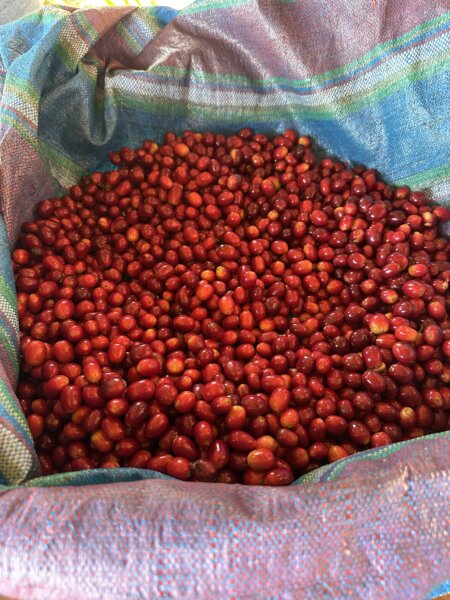 The market has been on a wild ride the last quarter, crescendoing to what may have been one of the most volatile periods in over a decade as the quarter closed. 2 key factors elevated prices, & both have seen sudden relief, dropping the C price from its high around 2.70/lb on September 23 down to around 2.44/lb as of October 8.
The market has been on a wild ride the last quarter, crescendoing to what may have been one of the most volatile periods in over a decade as the quarter closed. 2 key factors elevated prices, & both have seen sudden relief, dropping the C price from its high around 2.70/lb on September 23 down to around 2.44/lb as of October 8.
The first factor was intense & historic drought in Brazil, which eased on reports of substantial showers–although there’s a likelihood of plant damage despite the rains coming in now. On this news, the C price dropped, but bounced back pretty quickly.
The second factor that created elevated C market price conditions was the EUDR, or EU Deforestation Regulation, which aims to prevent the import & trade of products that contribute to deforestation & forest degradation & requires sellers of many commodities including coffee to demonstrate that their products are deforestation-free & not linked to illegal harvesting or trade. It was scheduled to go into effect January 1, 2025, creating a mad rush to get coffee into the EU prior to that date. That rush eased this week on news that the European Commission will propose a delay in implementation, further dropping prices to their current state.
The EUDR created ripple effects for us, both in the prices we pay & the demand we’ve been receiving. We’ve renegotiated with producer partners so they can continue to remain competitive. We’ve also received inquiries from roasters, brokers, & others in the trade as some of their contracts have been defaulted on. So far, so good with our agreements, which is a testament to the strength & longevity of who, where, & how we work.
Even as these conditions ease, the cause-&-effect relationship of a volatile C market on local prices in the communities in which we work don’t move in tandem with that market. The high C created a chain reaction that won’t suddenly halt as the C drops. We’ll remain agile & keep you posted.
Peru
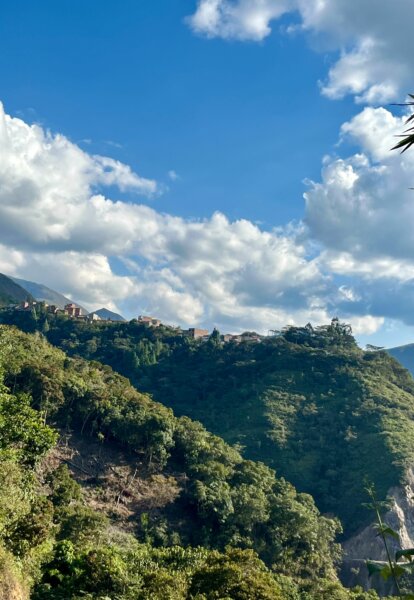 The sourcing landscape in Peru changed dramatically since we wrote our last origin & shipment update at the end of June. At that time, the price per kg of clean, dry parchment was around 13 Peruvian soles (USD $3.43) per kilo of parchment, despite the C market hovering at $2.30 per pound.
The sourcing landscape in Peru changed dramatically since we wrote our last origin & shipment update at the end of June. At that time, the price per kg of clean, dry parchment was around 13 Peruvian soles (USD $3.43) per kilo of parchment, despite the C market hovering at $2.30 per pound.
In subsequent weeks, the scramble for coffee began. By end of July, prices in Cusco were over 15 soles per kilo for clean, dry parchment, & similar qualities in the north were at or above 14 soles per kilo. Prices have only continued to increase since then. Currently (start of October), coffees in Northern Peru are over 18 soles per kilo of parchment, & prices in Southern Peru are between 18-20 soles per kilo of parchment, depending on the area. There is also excessive demand for coffees to route into the EU during 2024 due to the EUDR which was supposed to come into effect at the new year. This factor has rapidly increased competition & prices in the internal market.
All of this has had major implications for our sourcing work. Producer organizations across the country are struggling to compete for parchment & have been defaulting on contracts left & right. In order to secure the volumes we agreed to at the start of the season, we renegotiated pricing with all of our suppliers, increasing the price of our contracts.
On September 18th, the US Federal Reserve cut interest rates aggressively for the first time since 2020, with immediate repercussions for the exchange rate. In Peru, the week of September 23 opened Monday with an exchange rate of 3.759 soles to the dollar & closed Friday 27 with an exchange rate of 3.714 soles to the dollar. This kind of decrease significantly impacts producer groups, who have contracts negotiated in USD but purchase coffee from farmers in soles.
On the plus side, quality is generally up from the 2023 season. Our in-country QC team has been impressed with both the quality of the green coffee & the cup quality we’re seeing in the lab.
Although producer organizations make harvest estimates at the beginning of each year, this year’s harvest arrived at unexpected times & quantities in several regions. In southern areas harvest started in June/July as opposed to the usual August. The same happened in northern areas where the harvest began earlier than anticipated. Some organizations attribute this change in harvest times to climate change.
Our shipments have left as scheduled in recent months from both Paita & Callao ports, presenting minor delays due to internal port operations. We’ll be keeping a closer eye & even more frequent comms on shipments moved between the last days of September & early October due to ripple-out delays from the strike (even post-resolution).
Available Lots
Fresh crop has now started arriving to North American warehouses & will continue to do so on a monthly basis through winter. However, availability is currently extremely limited. Please reach out to your reps ASAP for bookings. As the EUDR may now have eased/been delayed, & that coffee is still on the trees at the higher elevations across the country, our fingers are crossed for more availability via November parchment deliveries.
Colombia
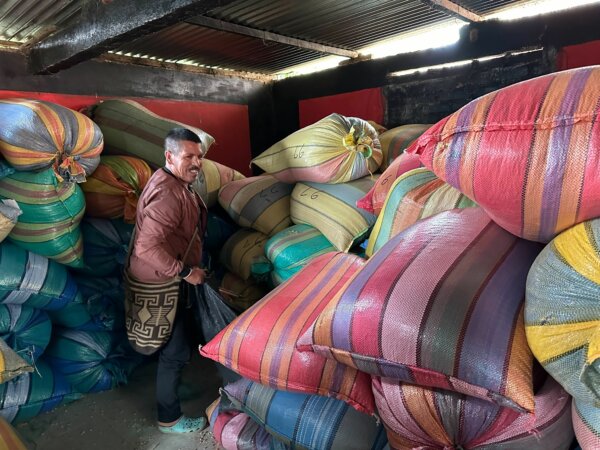 First semester harvest has concluded in Colombia’s southern producing regions. Prices were high, similar to 2022, triggering a shorter harvest window as farmers rushed to deliver parchment during the high-price period. Production reached 12.5 million bags in the 12-month period between 9/23-8/24 (per Condor Colombia), nearly a 20% increase over the prior 12 month period.
First semester harvest has concluded in Colombia’s southern producing regions. Prices were high, similar to 2022, triggering a shorter harvest window as farmers rushed to deliver parchment during the high-price period. Production reached 12.5 million bags in the 12-month period between 9/23-8/24 (per Condor Colombia), nearly a 20% increase over the prior 12 month period.
Improved flowering after last year’s main harvest has generated expectations for a strong volume of coffee from this next harvest that is just now set to kick off. There isn’t a forecast for price relief on the near horizon, but we will see what the next 60 days bring.
A nationwide transport strike over increased fuel costs ended after just a couple of weeks, easing trade concerns over shipment delays, though a truck shortage persists.
Available Lots
Our first containers of the season set sail in early October & will arrive at Ports of NJ & Houston in early- to mid-November. Expect the classics from both Inzá & Tablon de Gomez in Nariño.
Rwanda
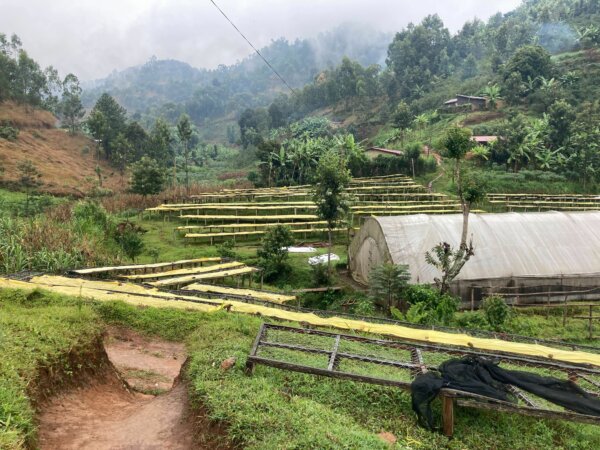 Shipping season is underway for the 2024 crop in Rwanda. Coffee flowering in Nyamasheke around Kanzu washing station indicates a promising harvest for the season ahead. But, a spell of dry weather in the Western District at a critical stage of crop development could have a negative impact on next year’s harvest, as farmers wait for rain to begin fertilizer application.
Shipping season is underway for the 2024 crop in Rwanda. Coffee flowering in Nyamasheke around Kanzu washing station indicates a promising harvest for the season ahead. But, a spell of dry weather in the Western District at a critical stage of crop development could have a negative impact on next year’s harvest, as farmers wait for rain to begin fertilizer application.
To help farmers boost production, C. Dorman Rwanda has imported Biofol Coffee Doctor, a foliar feed to be distributed free of charge to farmers working with Dormans, including those at Kanzu. This fertilizer is expected to enhance & sustain production by providing essential nutrients that strengthen the plants’ resistance to pests & diseases.
Available Lots
Our 2024 Rwanda coffees are currently afloat to the US East Coast. We will move available volume to the West Coast on arrival. Expect lot availability on both coasts in November. Kanzu lots are tasting fantastic, with a profile full of juicy ripe stone fruits, candied citrus, brown sugar, & fresh honey. Reach out to your sales rep with interest.
Bolivia
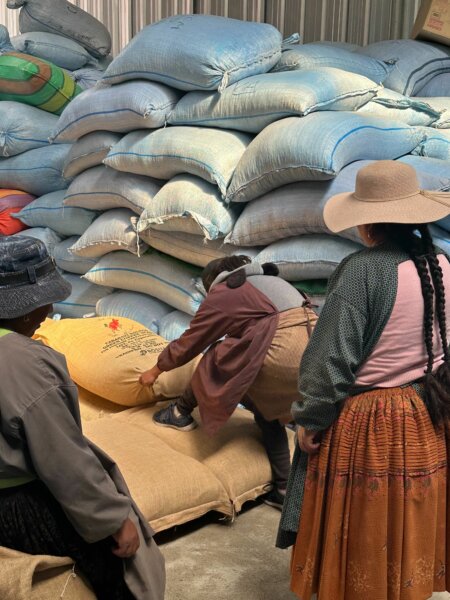 The primary harvest in the greater Caranavi region of Los Yungas is approaching its close. Heading into the harvest season, forecasts predicted an increase in volume upwards from 25,000 bags across Bolivia in 2024 to somewhere in the neighborhood of 35,000 bags. The massive drought that has heavily impacted Cusco & other growing areas across Southern Peru has also affected certain parts of Bolivia, though our supply chain partners have not been severely affected by drought nor the irregular rains they’ve received at times. We suspect that volumes have not reached their estimated increase, though final crop numbers have yet to be submitted.
The primary harvest in the greater Caranavi region of Los Yungas is approaching its close. Heading into the harvest season, forecasts predicted an increase in volume upwards from 25,000 bags across Bolivia in 2024 to somewhere in the neighborhood of 35,000 bags. The massive drought that has heavily impacted Cusco & other growing areas across Southern Peru has also affected certain parts of Bolivia, though our supply chain partners have not been severely affected by drought nor the irregular rains they’ve received at times. We suspect that volumes have not reached their estimated increase, though final crop numbers have yet to be submitted.
Available Lots
Our first Bolivian container of the season is now afloat & due into Port of NJ later this month. We’ll have another 2-3 containers arriving behind it through fall. Expect washed community lots from across Caranavi as well anaerobic naturals from our partners at Finca Rosita.
Ethiopia
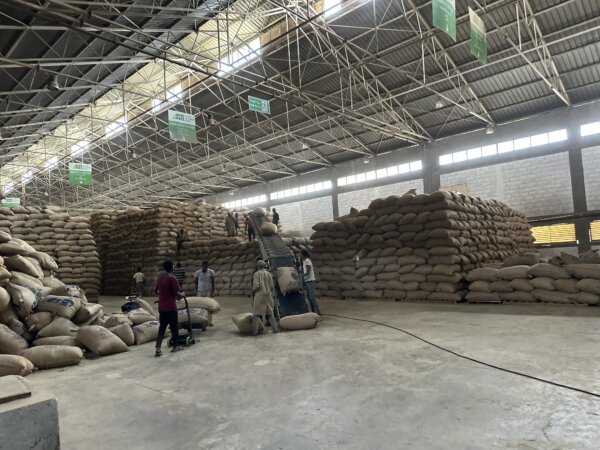 As the window for arrival into Europe prior to the new year (& former start of the EUDR) closes, the crop season for 2023/24 has also tapered. The 2024/25 harvest is set to kick off at the end of the month in the lower elevations. Rains have slowed across producing regions allowing for dry, sunny conditions optimal for the last stage of the ripening cycle. Crop estimates range from being somewhat solid/regular in size to being on the smaller side. As cash will once again be king with banks unlikely to be strong players in the sector, many are predicting an even smaller crop of washed coffees from last year which was smaller than the year before.
As the window for arrival into Europe prior to the new year (& former start of the EUDR) closes, the crop season for 2023/24 has also tapered. The 2024/25 harvest is set to kick off at the end of the month in the lower elevations. Rains have slowed across producing regions allowing for dry, sunny conditions optimal for the last stage of the ripening cycle. Crop estimates range from being somewhat solid/regular in size to being on the smaller side. As cash will once again be king with banks unlikely to be strong players in the sector, many are predicting an even smaller crop of washed coffees from last year which was smaller than the year before.
Port conditions have improved in Djibouti allowing for a freer flow of vessels. We are hopeful to see transit times continue to improve into the new year.
Available Lots
All of our 2024 shipments have landed safely into ports across North America. As many of them landed on the earlier side in spring we are close to sold out, though a small volume of both washed & naturals remain in NJ & Houston.
Mexico
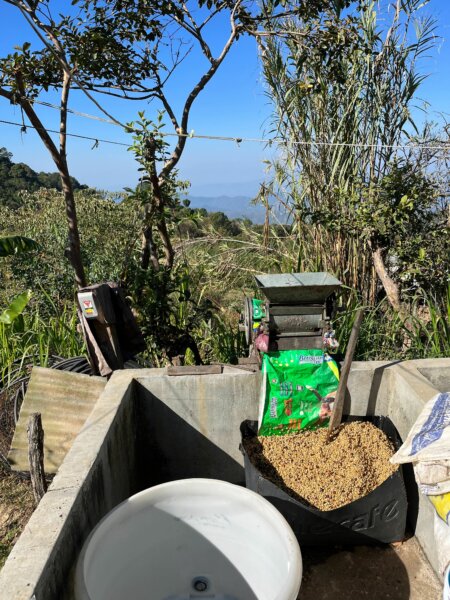 Rains have arrived strongly at the right time in Mexico’s coffeelands creating good flowering conditions this past summer across most of the production areas. According to our commercial partner in Puebla, the size & quantity of the cherry set is strong & producers are looking forward to a 20-30% larger harvest than last year. In Veracruz, partners are reporting a great harvest outlook, healthy trees, & a larger crop projection compared to last year. Harvest will begin in the lower elevations in early- to mid-December across all regions, with higher altitude/quality starting mid-January.
Rains have arrived strongly at the right time in Mexico’s coffeelands creating good flowering conditions this past summer across most of the production areas. According to our commercial partner in Puebla, the size & quantity of the cherry set is strong & producers are looking forward to a 20-30% larger harvest than last year. In Veracruz, partners are reporting a great harvest outlook, healthy trees, & a larger crop projection compared to last year. Harvest will begin in the lower elevations in early- to mid-December across all regions, with higher altitude/quality starting mid-January.
In political news, Mexico inaugurated a new president as of October 1 after 6 years of Andres Manuel Lopez Obrador (AMLO) at the helm. Claudia Sheinbaum, former mayor of Mexico City & the first woman elected to the presidency in all of North America, is a close protegee of AMLO & will continue leading under the same Morena party. She takes the presidency with a historic mandate, with the party controlling huge majorities in Congress & ¾ of state legislatures.
This concentration of political power along with recent constitutional amendments which affect judicial elections have created an environment of economic uncertainty & caused the Mexican Peso to retreat from its strong gains the past few years. Investors are acting cautiously as the transition plays out. However, Mexico has a huge chance to continue to build on manufacturing infrastructure as the main trade partner for the US.
Climatically, the Pacific Coast, centered in Guerrero & parts of Oaxaca, has been hit twice in the past week by a strong hurricane causing substantial flooding, landslides, & displacement of communities in already remote areas with little infrastructure.
Increased cartel violence in recent months continues to plague local communities, especially in Sinaloa & Chiapas near the Guatemala border, as well as flare ups again in parts of Veracruz.
Available Lots
2 exemplary community lots from the Sierra Norte region of Oaxaca, Sochiapam & Sierra Mixe, are available in Continental, as is the Puebla Zongozotla, representing perhaps the best value in the spot line up currently. In the Annex, 2 different community lota are still available, showcasing the full potential of the local Pluma variety from the strong producers in San Vicente Yogondoy, Sierra Sur Oaxaca.
Kenya
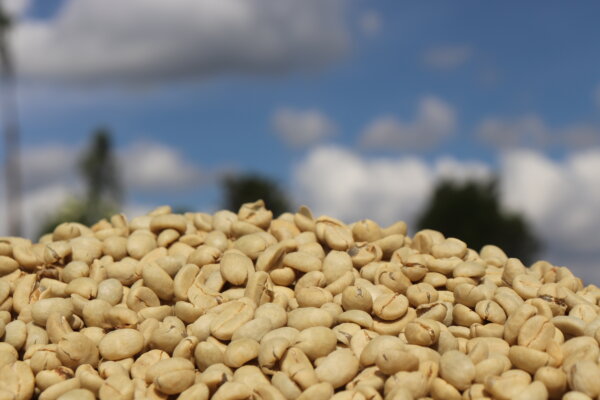 Kenya’s main crop will begin in a couple weeks in the areas near Nairobi. Nyeri, Kirinyaga, & Embu will begin harvest toward the end of October with trees in most areas looking healthy & showing good early cherry quality. Farms with milling licenses will have the ability to sell directly to buyers, but otherwise all coffee must continue to be purchased through the Nairobi coffee exchange since last year’s change in government regulations. Regarding the internal market, Kennedy Keya from Dormans has stated that “the sharp rise in the NY terminal market is raising farmers’ expectations for higher prices. Logistics are ok, with no concerns getting vessels. Only challenge is the long transit time—about 60 days from Mombasa to NY.”
Kenya’s main crop will begin in a couple weeks in the areas near Nairobi. Nyeri, Kirinyaga, & Embu will begin harvest toward the end of October with trees in most areas looking healthy & showing good early cherry quality. Farms with milling licenses will have the ability to sell directly to buyers, but otherwise all coffee must continue to be purchased through the Nairobi coffee exchange since last year’s change in government regulations. Regarding the internal market, Kennedy Keya from Dormans has stated that “the sharp rise in the NY terminal market is raising farmers’ expectations for higher prices. Logistics are ok, with no concerns getting vessels. Only challenge is the long transit time—about 60 days from Mombasa to NY.”
The Kenyan shilling has strengthened against the USD since the beginning of the year as the government has continued to push a more globalized trading ideology. There was recent upheaval from citizens after the government attempted to lease the Jomo Kenyatta airport to an offshore management company. Tensions over both high unemployment & inflation have eased some, despite the fact that neither have improved.
Available Lots
We are currently sold out of Kenyan coffee, but will be reaching out to clients late fall/early winter for forward booking 2025 lots!
Guatemala
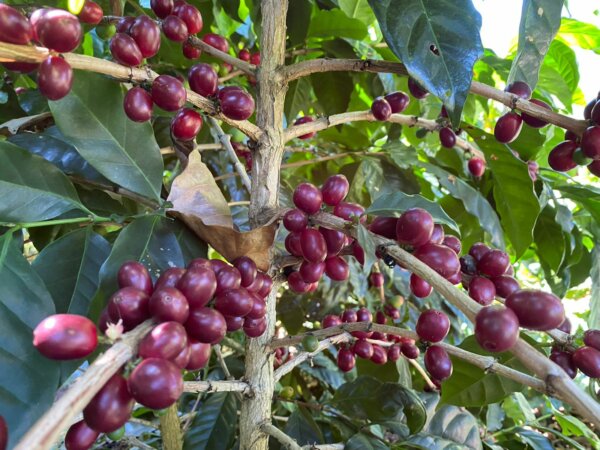 Guatemala saw good rains this spring with 927mm falling in Huehuetenango from April to July, resulting in a strong flowering. This was a 13% increase in rain over last year & productivity is expected to increase by 8% over the 2023 harvest.
Guatemala saw good rains this spring with 927mm falling in Huehuetenango from April to July, resulting in a strong flowering. This was a 13% increase in rain over last year & productivity is expected to increase by 8% over the 2023 harvest.
Our sourcing partner reports that labor shortages continue to plague Guatemala with the ongoing lack of migrant workers. This will continue to be a challenge for the upcoming harvest season.
Higher elevations are expected to begin harvesting in December of this year with arrivals hitting US warehouses in spring.
| Interested in sourcing coffee with us? Reach out at info@redfoxcoffeemerchants.com. To learn more about our work, check out our journal and follow us on Instagram @redfoxcoffeemerchants . |
